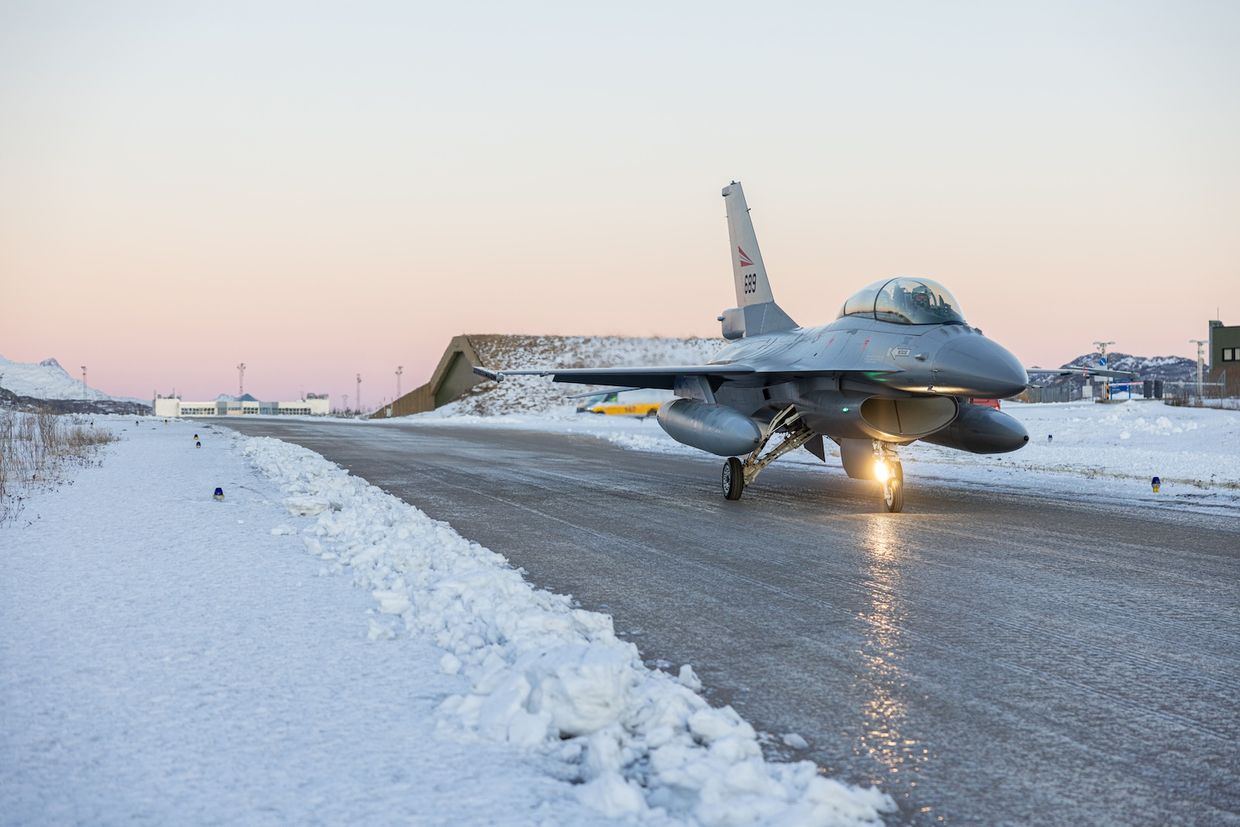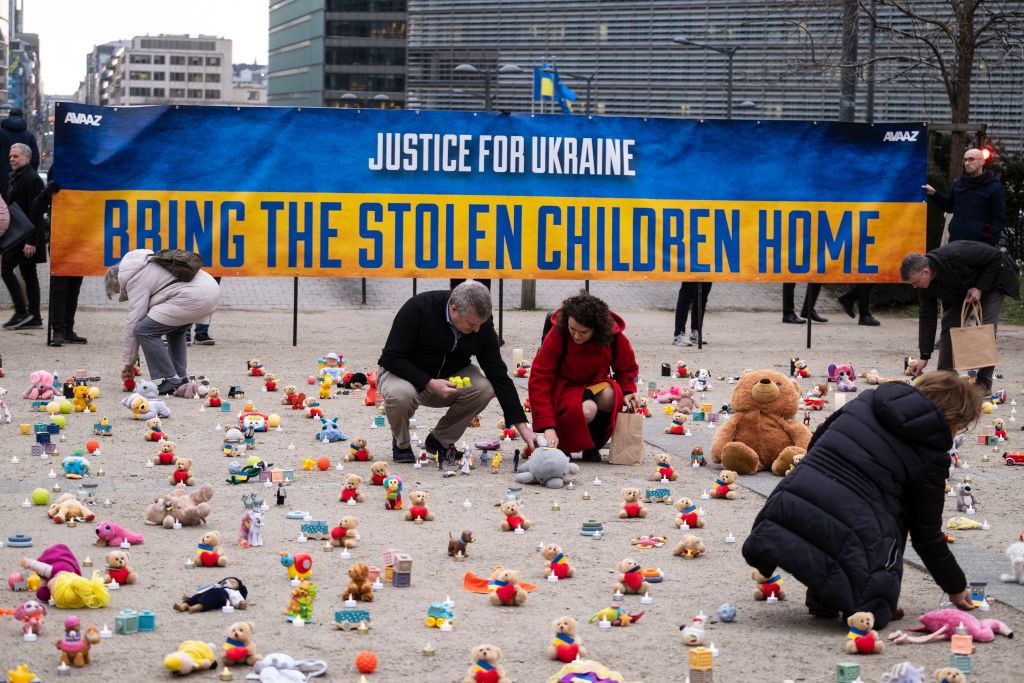Ukraine war latest: Netherlands to send 6 more F-16s to Ukraine

Key developments on Feb. 5:
- Netherlands to send 6 more F-16 jets to Ukraine
- Finnish plant to hike ammunition production fivefold due to Russia's war in Ukraine
- Russian attacks on cities, settlements increased by 25 percent last week
- Authorities ban foreign humanitarian workers from parts of Kherson Oblast
- Russia claims senior official killed in alleged attack on occupied Lysychansk.
The Netherlands is preparing to send Ukraine an additional six U.S.-made F-16 fighter jets, Dutch Defense Minister Kajsa Ollongren announced on Feb. 5, bringing the total number of jets pledged to Ukraine by the Netherlands to 24.
In a separate announcement, the Dutch Defense Ministry explained that the six additional jets became available for Ukraine since an agreement to sell these planes to Draken International, an American aerospace and defense company, was canceled.
Dutch Prime Minister Mark Rutte said on Dec. 22 that the Netherlands was preparing the initial batch of 18 F-16s for delivery to Ukraine. The Dutch Air Force is transitioning to more advanced F-35 fighter jets.
In mid-August 2023, Denmark pledged to give Ukraine 19 F-16s, with the first batch of six aircraft expected to be delivered in spring 2024 and the rest by 2025.
Belgium's defense minister has promised several jets, which would likely arrive in 2025. According to Norwegian broadcaster NRK, Norway plans to send between five and 10 planes.
Experts told the Kyiv Independent that Ukraine will likely have at least some F-16s operational in late spring or early summer.
Danish and Dutch officials have said the delivery schedule depends on the readiness of Ukraine's infrastructure and pilots, among other factors.
Ukrainian pilots and technicians continue their training on F-16s in several European countries and the U.S., with the latter expected to complete later in 2024.
Finnish plant to hike ammunition production fivefold due to Russia's war in Ukraine
Finland's Nammo Lapua ammunition factory will increase production fivefold in 2024 due to Russia’s war in Ukraine, the Finnish public broadcaster YLE reported on Feb. 4, citing the regional director of the factory, Ilkka Heikkila.
The increase in production at the factory in southwestern Finland’s city of Sastamala, which manufactures artillery shell casings, is related to the war in Ukraine, as artillery shells play a key role in Finland's aid to Ukraine.
Finland is a key partner of Ukraine in the fight against Russian aggression. The Finnish Defense Ministry announced on Dec. 21, 2023, military aid amounting to 106 million euros ($114 million).
According to the ministry, Finland has delivered 1.6 billion euros ($1.72 billion) worth of military aid to Ukraine since the start of the full-scale war.
The Nammo factory has applied to participate in the EU’s ASAP (Act in Support of Ammunition Production) project, aiming to increase the EU ammunition and missile production to tackle Ukraine's shortages.
If successful, Nammo will build a new factory for manufacturing artillery shells. The project will also require funding from the Finnish government, YLE said.
Nammo (Nordic Ammunition Company) is a joint Norwegian-Finnish company specializing in ammunition production. Its shares are split evenly between Norway’s Trade and Industry Ministry and the Finnish defense corporation Patria.
In an interview with Kremlin-affiliated media in December, Russian dictator Vladimir Putin said that Russia would create a "Leningrad military district" on the border with Finland and concentrate forces there.
Since its accession into NATO in March 2023, Finland has started to fortify its defense.
The U.S. and Finland signed a bilateral defense cooperation deal on Dec. 18, 2023, that strengthened mutual defense ties and gave the U.S. access to 15 Finnish military facilities, including four air bases and one naval base.
"Finland knows almost better than anyone what is at stake for Ukraine. In 1939, the Finns also faced a Russian invasion and proved that a free nation could put up an incredibly powerful and resilient resistance," U.S. Secretary of State Antony Blinken said.
Russian attacks on cities, settlements increased by 25 percent last week
Russian forces launched more than 1,500 attacks against Ukraine last week, which is almost a 25% increase compared to previous weeks, Interior Minister Ihor Klymenko said.
Ukrainian cities, towns, and villages have suffered regular Russian strikes since the outbreak of the full-scale war, inflicting civilian casualties on a daily basis.
According to Klymenko, more than 570 settlements were attacked last week, most of them in Zaporizhzhia Oblast. The southeastern oblast remains partially occupied by Russian forces.
"As a result of Russian strikes, 12 people were killed, and 60 people were injured last week," the minister added.
The UN said in January that Russia's war against Ukraine has killed more than 10,200 civilians and injured more than 19,300. The actual figure is likely significantly higher as Russian authorities do not allow proper monitoring in occupied areas.
Authorities ban foreign humanitarian workers from parts of Kherson Oblast after French citizens killed in Russian attack
Foreign volunteers, NGO workers, and embassy staff are banned from entering parts of Kherson Oblast without permission from the authorities after two French citizens were killed in a Russian strike on Feb. 1, the Kherson Oblast Military Administration announced on Feb. 5.
The two humanitarian workers were killed when Russian forces attacked Beryslav, a city located 65 kilometers from the region's administrative center of Kherson. The city is frequently hit by Russian attacks.
Three other French citizens and a Ukrainian were wounded, according to the military administration. French Foreign Minister Stephane Sejourne described the strike as an "act of barbarity," and France reportedly plans to summon the Russian ambassador to condemn the killing.
Permission from the region's military administration and military command is now needed for "representatives of foreign consular institutions, or representative offices of international organizations" to enter settlements that are frequently shelled by Russian forces, the Kherson Oblast Military Administration said.
"In wartime, no one can guarantee safety, but we must clearly record the presence of people in the places of active hostilities."
Earlier in September, Emma Igual of Spain and Anthony Ignat of Canada, representatives of the foreign NGO known as Road to Relief which helps civilians affected by the fighting in the Donbas and Kherson Oblast, were killed by Russian shelling.
Russia claims senior official killed in alleged attack on occupied Lysychansk
A senior Russian-installed official in occupied Luhansk Oblast was killed in an alleged attack against Lysychansk on Feb. 3, said Leonid Pasechnik, the head of Russian occupation authorities in Luhansk Oblast, on Feb. 5.
The attack allegedly killed Alexey Poteleshchenko, the Russian-installed head of the emergency situations department of occupation authorities in Luhansk Oblast. Russian proxy forces in Luhansk Oblast blamed Ukraine and claimed that the attack on a local bakery killed a total of 28 people.
Kyiv did not comment on the supposed attack.
Suspilne Donbas wrote, citing a source in the exiled Lysychansk military administration, that the bakery opened only after the start of the occupation. It was allegedly used to prepare food for Russian proxy forces and hosted regular meetings for Russian occupants, Suspilne Donbas wrote.
The Kyiv Independent could not verify the reports of the attack or information about casualties.
Lysychansk was captured by Russian forces in July 2022 as the last Ukrainian holdout in Luhansk Oblast at the time. It is currently located around 10 kilometers behind the front line. Ukraine presently holds several settlements on the western edge of the oblast.
While the city's population before February 2022 amounted to around 90,000 residents, Deputy Prime Minister Iryna Verseshchuk estimated that by July 2022, the vast majority of residents had evacuated, and the population had dropped to below 12,000.
Exiled Mayor Valerii Shybiko said in July 2023 that all medical facilities in the occupied city have been re-purposed as military hospitals for Russian troops and that the city suffers from power shortages and a lack of drinking water.
















